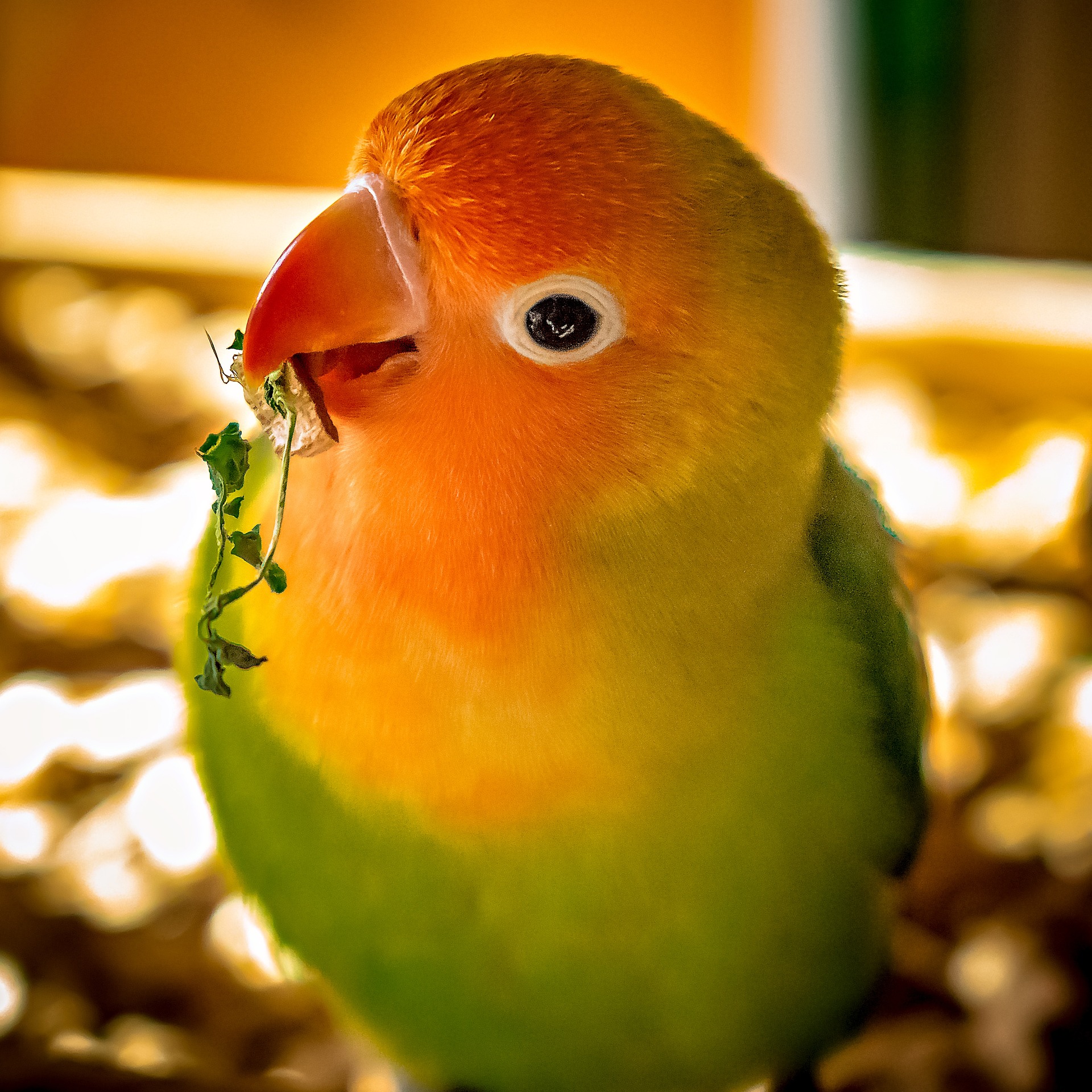The peach faced lovebird is the smallest member of the parrot family, kept as a companion pet. They are social birds that form strong bonds with their mates and are very lively, active, and playful birds that love to chew and climb. They are very social birds that need human interaction and do not do well if left alone.
Origin & History
The name “lovebird” comes from their habit of sitting close to each other and preening on each other’s feathers. Lovebirds are native to Africa, and there are nine different species. The most common species kept as pets are the black-masked lovebird (Agapornis personatus), the peach faced lovebird, and the Fischer’s lovebird (Agapornis fischeri). The species are named after the color of their distinctive masks.
They have been kept as pets since the time of the ancient Egyptians, and they were first brought to Europe in the 1600s and later to the Americas. Lovebirds were very popular in Victorian England and are still one of the most popular pet birds today.
Appearance & Colors
Lovebirds are small parrots with a stocky build and a short square or round tail. They have a large bill and a prominent cere (a fleshy growth on the top of the beak). They are small birds, measuring only about 5-6.5 inches in length and weighing around 2 ounces. The average lifespan is 10-12 years, but one can live longer with proper care. They have a wingspan of about 8-10 inches.
The plumage of lovebirds is very colorful and available in a wide variety of colors and color combinations. The most common colors are teal, yellow, white, green, and peach faced lovebirds. They tend to be vivid with faces and heads that are a different color than their body. The most common color morph is green, but many other color mutations have been created by breeders, including blue, violet, yellow, cream, pied (two colors), and white.
Care & Feeding
Lovebirds are very active birds that need a lot of space to move around and explore. A cage that is at least 20x20x32 inches is a good size for a pair. For safety reasons, the bar spacing shouldn’t be any wider than 1/2 inch. It should have plenty of toys and perches (at least four) for climbing and chewing, with water and feed dishes placed away from the cage bars. The cage should be placed in an area of the house where there is a lot of activity so that the bird feels like part of the family, but also close to a wall to help the bird feel secure.
Balanced nutrition is essential for a lovebird’s health. A diet of pellets, fresh vegetables and fruits, and seed mixes provides the necessary nutrients. Offer fresh foods daily, and remove any uneaten food to avoid spoilage. Water should always be available, and you should clean the dishes daily.
Exercise
Lovebirds need to exercise to stay healthy, and a large cage is important to provide them with enough space to move around. In addition, they enjoy spending time outside their cage, so a play gym or bird-safe room where they can fly and explore is a good idea.
Lovebirds also enjoy bathing, so a bird bath or misting with a spray bottle can provide them with additional exercise and enrichment.
Common Health Problems
(For more information on general pet bird care, click here) They are generally healthy birds, but there are a few health problems that can affect lovebirds. Infectious diseases such as psittacosis, campylobacteriosis, and salmonellosis can be passed to humans, so washing your hands after handling your bird is important. They are also susceptible to a few specific health problems, including:
FEATHER PICKING AND SELF-MUTILATION: This behavioral problem is caused by boredom, stress, or lack of social interaction. You can prevent it by providing your bird with plenty of toys and attention.
OBESITY: Lovebirds love to eat, so they are prone to obesity if they are not given enough exercise. A balanced diet and plenty of exercise will help keep your bird at a healthy weight.
RESPIRATORY PROBLEMS: Respiratory infections are common in lovebirds, and bacteria, viruses, or fungi can cause them. Symptoms include wheezing, coughing, and difficulty breathing. If you notice these symptoms, take your bird to the vet immediately.
All lovebirds, especially the peach faced lovebirds (which are my personal favorite) make lovely pets and are known for their loving personalities. They require a lot of space to move around and need plenty of toys and perches in their cage. A balanced diet, including fresh vegetables, fruits, and seeds, is important, as well as plenty of exercise outside the cage. Lovebirds can be susceptible to a few health problems, so it is crucial to monitor their health and take them to the vet if you notice any symptoms.
Click here to build your own custom aviary.
